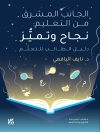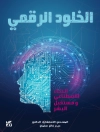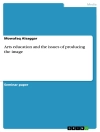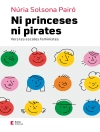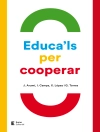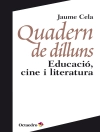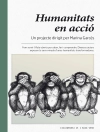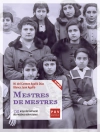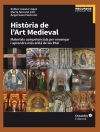This book aims at guiding the educators from a variety of available technologies to support learning and teaching by discussing the learning benefits and the challenges that interactive technology imposes. This guidance is based on practical experiences gathered through developing and integrating them into varied educational settings. It compiles experiences gained with various interactive technologies, offering a comprehensive perspective on the use and potential value of interactive technologies to support learning and teaching. Taken together, the chapters provide a broader view that does not focus exclusively on the uses of technology in educational settings, but also on the impact and ability of technology to improve the learning and teaching processes.
The book addresses the needs of researchers, educators and other stakeholders in the area of education interested in learning how interactive technologies can be used to overcome key educational challenges.
Tabella dei contenuti
Foreword.- Preface.- Chapter 1. Introduction: Learning in a digital world, the role of interactive technologies to support learning and teaching.- PART I: Theoretical and empirical findings on the integration of interactive technologies in formal or informal education.- Chapter 2. Redefining Augmented Reality in the Classroom.- Chapter 3. Supporting learning in digital games: Promises and challenges.- Chapter 4. Under the hood of digital educational board games: Identifying the link between design elements and learning impact.- Chapter 5. Prompting deep learning with interactive technologies: Theoretical perspectives in integrating interactive technologies.- Chapter 6. Creating dialectics to learn: Infrastructures, practices, and challenges.- Chapter 7. Virtual reality learning environments (VRLEs) for training and learning.- Chapter 8. What gesture and embodied learning bring to VR and education.- Chapter 9. The turn toward wearables as embodied learning technologies.- Chapter 10. Review of augmented reality in education: Situated learning with digital and non-digital resources.- PART II: Use cases of interactive systems, applications and prototypes providing specific learning/teaching affordances.- Chapter 11. The Global Ed 2 project: An interdisciplinary simulation promoting students’ global citizenship and STEM literacy.- Chapter 12. Collective efficacy with identity transparency.- Chapter 13. Designing and evaluating augmented reality applications across multidisciplinary subjects for elementary students.- Chapter 14. Teaching technology design: Practicing teachers designing serious educational games.- Chapter 15. Digital geography and interactive technologies to improve students’ competencies.- Chapter 16. Student and teacher’s perceptions toward the in-game card as educational reward (ICER) moodle plug-in.- Chapter 17. Virtual reality simulations for physics learning.- Chapter 18. Open Sim in the primary school classroom: Chatterdale scenario.- Chapter 19. Affordances of a game-based learning environment for learning basic numbers.- Chapter 20. Design a collaborative visualization-based learning system for teacher’s professional development.
Circa l’autore
Prof. Paloma Díaz is a Full Professor at the Department of Computer Science and Engineering of Universidad Carlos III de Madrid. Holding a Ph D in Computer Science and Engineering from Universidad Politécnica de Madrid, she has been involved in interdisciplinary research in the Interactive Systems research group (DEI LAB) and the Institute of Culture and Technology from UC3M. Her main areas of interest are interaction design, web/usability engineering, mobile and ubiquitous computing, big data visualization, civic participation, ICT for learning and teaching, and digital cultural heritage.
Dr. Andri Ioannou is an assistant professor at the Department of Multimedia and Graphic Arts and director of the Cyprus Interaction Research Lab. Andri holds a Ph D in Educational Technology from the University of Connecticut (USA) and a BSc in Computer Science from the University of Cyprus. Her research interests include the design and evaluation of technology-enhanced learning environments, use of technology to support student collaboration, decision-making, and knowledge creation in both distant and collocated settings, embodied play for learning using emerging technology, and integration of technology at all levels of education.
Dr. Kaushal Kumar Bhagat is currently working as an assistant professor in the Centre for Educational Technology at the Indian Institute of Technology (IIT), Kharagpur, India. He received his Ph.D. from the Graduate Institute of Science Education at the National Taiwan Normal University in September 2016. He then served a two-year postdoctoral position at the Smart Learning Institute at Beijing Normal University. He has published several referred journal articles and book chapters. Dr. Bhagat was presented NTNU International Outstanding Achievement Award. He was also awarded 2017 IEEE TCLT Young Researcher award. His research area of interest includes online learning, augmented reality, virtual reality, mathematics education, flipped classroom, formative assessment and technology-enhanced learning.
Prof. J. Michael Spector is a Professor and Former Chair of Learning Technologies at the University of North Texas. He earned a Ph D in Philosophy from the University of Texas at Austin. His research focuses on intelligent support for instructional design, assessing learning in complex domains, and technology integration in education. He is editor of Educational Technology Research & Development and serves on numerous other editorial boards. Prof. Spector has more than 150 publications and has received more than $15 million in grant funding.


